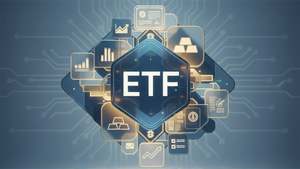
The CBRE Global Real Estate Income Fund (NYSE: IGR) has announced its monthly distributions for the final quarter of 2025, declaring a total dividend of $0.18 per share for the October-December period. This translates to a consistent $0.06 per share distribution for each month, making it a compelling proposition for income-focused investors. The declaration, made on October 10, 2025, highlights an impressive 14.8% annualized yield based on the fund's Net Asset Value (NAV) as of October 7, 2025, immediately positioning IGR as a noteworthy contender in the current financial landscape.
This significant dividend payout underscores IGR's commitment to delivering high current income to its shareholders, a primary objective of the fund. The robust yield, particularly in a dynamic market environment, is expected to draw considerable attention from investors seeking stable and substantial cash flow from their portfolios. The announcement also provides a clear roadmap for distributions through the end of the year, offering predictability in income generation for its unitholders.
Detailed Coverage of IGR's Q4 Dividend Declaration
The CBRE Global Real Estate Income Fund (NYSE: IGR) has formalized its distribution schedule for the upcoming months, confirming a $0.06 per share monthly dividend for October, November, and December 2025. This consistent payout amounts to a total of $0.18 for the quarter. What truly distinguishes this declaration is the striking 14.8% annualized yield, calculated based on the fund's Net Asset Value (NAV) of $4.85 per share as of October 7, 2025. For investors tracking market price, the annualized distribution rate based on the closing market price of $5.13 on the same date stands at a still impressive 14.0%.
The timeline for these distributions has been clearly laid out. For October 2025, the ex-dividend and record dates are set for October 20, with the payable date on October 31. Looking ahead to November, the ex-dividend and record dates fall on November 20, and shareholders can expect payment by November 28. Finally, for December, the ex-dividend and record dates are December 19, with payments scheduled for December 31, ensuring a steady income stream right up to the year's end. This detailed schedule, declared on October 10, 2025, makes the event highly current and relevant to today's market.
Key players in this declaration include the CBRE Global Real Estate Income Fund (NYSE: IGR) itself, an actively managed, diversified closed-end fund (CEF), and its Board of Trustees, who are responsible for reviewing the fund's distribution policy quarterly. The investment management team also plays a crucial role in managing the fund's portfolio to generate the income necessary to support these distributions. Initial market reactions are likely to be positive among income-seeking investors, given the fund's stated objective and the attractiveness of such a high yield, especially as market participants assess opportunities for consistent returns.
The fund's distribution policy is not static; it undergoes a rigorous quarterly review by the Board of Trustees. This review considers various factors, including prevailing market conditions, the investment management team's outlook on the global real estate sector, the fund's net investment income, and both realized and unrealized capital gains. The aim is to maintain a stable monthly distribution that aligns with the fund's earnings over time. However, it is important for investors to note that a portion of these distributions could potentially be classified as a return of capital if the total payouts exceed the net investment income and net realized capital gains for a given period.
Implications for Public Companies and Investors
The declared dividend by the CBRE Global Real Estate Income Fund (NYSE: IGR) primarily impacts the fund itself and its existing and prospective investors. For IGR, maintaining such a robust and consistent distribution reinforces its position as a go-to vehicle for income generation within the real estate sector. Its dual objective of high current income and secondary capital appreciation is well-served by this dividend, potentially enhancing its appeal and attracting further capital inflows. The fund's ability to sustain this yield will be a critical factor in its long-term performance and investor confidence.
Income-seeking investors stand to be the primary beneficiaries and key stakeholders in this event. The 14.8% annualized NAV yield is a significant draw, especially for those dependent on regular cash flow from their investments, such as retirees or those building an income-focused portfolio. The predictable monthly payout schedule for October, November, and December offers a clear advantage in financial planning. However, these investors will also need to scrutinize the sustainability of such a high yield, considering the inherent volatility and interest-rate sensitivity of global real estate investments.
While the immediate impact is concentrated on IGR, the broader real estate investment trust (REIT) and closed-end fund (CEF) sectors might experience ripple effects. Funds that offer lower yields might find themselves under pressure to perform or adjust their distribution policies to remain competitive. Conversely, other real estate-focused CEFs demonstrating similar strong income generation capabilities could see increased investor interest. Publicly traded companies within the global real estate sector, whose performance underpins IGR's holdings, also indirectly benefit from a robust and attractive income fund, as it signals underlying strength or potential in the broader market.
The potential for a portion of the distribution to be classified as a return of capital (ROC) is also a crucial consideration for investors. While ROC is not necessarily negative, as it can be a tax-efficient way to return capital, it can also signify that the fund is distributing more than its net investment income and realized gains. This aspect requires careful monitoring by investors to understand the true source and sustainability of their distributions, influencing their long-term investment decisions regarding IGR.
Wider Significance in the Financial Landscape
The CBRE Global Real Estate Income Fund's (NYSE: IGR) declaration of a 14.8% annualized NAV yield holds significant weight within the broader financial markets, particularly for the closed-end fund (CEF) and real estate investment sectors. This high yield positions IGR prominently against broader industry trends, where many income-generating assets are navigating fluctuating interest rates and economic uncertainties. It signals a potential for strong performance within specific segments of the global real estate market, or a strategic decision by the fund's management to prioritize current income.
This event could create ripple effects across the competitive landscape of income-focused funds. Other real estate CEFs or even exchange-traded funds (ETFs) with similar mandates might face increased scrutiny regarding their own distribution policies and yields. Funds that cannot match such attractive payouts could experience outflows or a decreased ability to attract new capital, pushing managers to re-evaluate their investment strategies or distribution targets. Partners within the real estate ecosystem, such as property management companies or developers whose assets might be held by IGR, could also see renewed investor confidence in the sector, potentially leading to easier access to capital or more favorable valuations.
From a regulatory or policy perspective, sustained high yields across multiple funds in a sector might draw attention from financial regulators, particularly concerning the sustainability and transparency of distribution sources, especially if a significant portion consistently comes from a return of capital. While currently there are no direct policy implications from this single declaration, a trend of such high yields could prompt discussions around investor protection and disclosure standards within the CEF space.
Historically, periods of high yields in income funds have often coincided with specific market conditions, such as periods of higher interest rates or distressed asset valuations that allow for attractive entry points. While the current environment of October 2025 is unique, comparisons can be drawn to past cycles where real estate, as an asset class, has offered compelling income opportunities. However, investors must also recall instances where high yields proved unsustainable, leading to distribution cuts or NAV erosion. This declaration serves as a reminder of both the potential rewards and inherent risks in seeking outsized income.
What Comes Next for IGR and the Market
In the short term, the impressive dividend declaration by the CBRE Global Real Estate Income Fund (NYSE: IGR) is likely to fuel continued investor interest and potentially increase trading volume around the fund's shares. Income-seeking investors, drawn by the 14.8% annualized NAV yield, may look to establish or increase their positions, especially leading up to the ex-dividend dates for October, November, and December. This heightened demand could exert upward pressure on IGR's market price, though potential volatility around distribution dates is also a possibility as investors enter and exit positions.
Looking further ahead, the long-term trajectory for IGR will largely hinge on the sustainability of its distributions and the performance of the global real estate market. The fund's ability to consistently generate sufficient net investment income and realized capital gains to cover its payouts will be paramount. Any significant downturns in global real estate values, or adverse shifts in interest rates that impact property valuations and rental income, could challenge the fund's capacity to maintain its current yield. Potential strategic pivots for IGR could include adjusting its portfolio allocation to capitalize on emerging real estate trends or to mitigate risks in specific geographic regions or property types.
Market opportunities for investors may emerge if IGR continues to deliver on its income promise, solidifying its reputation as a reliable income generator. However, challenges include the inherent risks of a concentrated sector fund, including sensitivity to economic cycles, interest rate changes, and geopolitical events that affect global property markets. Potential scenarios range from continued strong performance and stable distributions, assuming a favorable real estate environment, to a more challenging outlook if the fund struggles to generate sufficient earnings, possibly leading to distribution adjustments in the future.
For the broader market, the success or struggles of funds like IGR will provide valuable insights into the health and attractiveness of global real estate as an income-generating asset class. Other fund managers will closely watch IGR's performance, potentially influencing their own strategies for real estate exposure and income distribution. The evolving landscape of interest rates and economic growth will continue to be a dominant factor shaping the opportunities and challenges for real estate income funds.
Comprehensive Wrap-Up
The recent declaration by the CBRE Global Real Estate Income Fund (NYSE: IGR) of a $0.18 total dividend for the fourth quarter of 2025, translating to a $0.06 monthly payout and an impressive 14.8% annualized NAV yield, stands as a significant event in the financial markets. This move firmly positions IGR as an attractive option for income-seeking investors, offering a compelling blend of high current income and predictable monthly distributions through the end of the year. The detailed schedule for ex-dividend and payable dates provides clarity and confidence for shareholders planning their cash flows.
Moving forward, the market will closely assess the sustainability of IGR's robust yield. While the fund's Board of Trustees rigorously reviews distribution policies, investors should remain vigilant regarding the fund's underlying performance, its ability to generate sufficient net investment income and capital gains, and the potential for distributions to include a return of capital. The health of the global real estate market, interest rate fluctuations, and broader economic conditions will all play crucial roles in shaping IGR's future performance and its capacity to maintain its current attractive payout.
The lasting impact of this declaration extends beyond IGR, potentially influencing strategies across the closed-end fund and real estate investment sectors. It highlights the ongoing demand for income-generating assets and sets a benchmark for yield expectations in a competitive market. Investors should continue to monitor IGR's financial reports, management commentary, and the broader real estate market trends in the coming months to make informed decisions regarding their investment in this high-yield fund.
This content is intended for informational purposes only and is not financial advice





